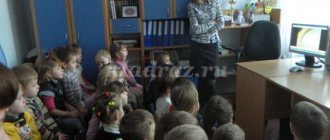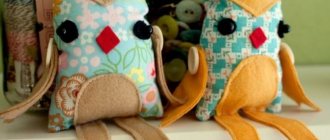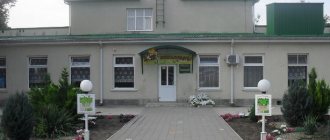Project "House of Tires"
A smaller model of a house made from “tires”.
Houses made from car tires are the latest fashion. This is an affordable and environmentally friendly method of reusing worn-out tires. Tires filled with soil provide a very strong frame and foundation. They can also be used as bricks. Tire houses offer great architectural flexibility. That is, they allow you to create any structure with attractive design elements, such as wide rounded corners and spiral staircases.
Goals of this project:
- Create an architectural structure using car tires that are no longer fit for purpose.
- Build a reduced scale model.
What we need:
- computer with Internet access;
- color printer;
- digital camera;
- round flat objects resembling tires;
- regular office supplies (paper, cardboard, glue, etc.).
Progress of the experiment:
- Read reviews on the relevant topic.
- Learn all terms and research questions.
- Find and print images that relate to the topic.
- Take photographs during the experiment.
- After thoroughly researching this topic, consult with local architects and landscape designers. Find out the details of using tires as a building material.
- Create your own unique architectural design. This could be a building, a playground, landscaping item, or even furniture.
- Build a scale model of this structure using round, flat objects that resemble tires. Checkers, hockey pucks, toy parts are suitable, and this is only an incomplete list of possible options.
- If you decide to make a small object, such as a piece of furniture, use a real tire.
- State your observations in a detailed report.
- Prepare a science fair display and include photographs, diagrams, models.
Conclusion:
Think about what other unnecessary things you can use when building a house.
Project “Where does the garbage go?”
- May 4, 2011
Competition "Children's Research Project"
Nomination "The World Around"
Our village has a very beautiful name - Solnechny. We were born in it, we grow, we study, we relax. New beautiful houses and other buildings are being built here. But you often see garbage cans filled with waste everywhere, and so much more garbage lying around.
And stray dogs, birds and even people rummage through all this. Then, our Sunny turns into a large garbage field that no one cares about. But then the big cars arrive. All garbage is loaded into them and taken away. To my question: “Where are they taking it?”, the adults answer: “To the landfill!”
Relevance of the project
The problem of waste disposal and recycling is relevant all over the world. A large number of scientists are working on it. New technologies are constantly being developed and new approaches are being introduced. In many Western countries, people sort their household waste themselves before throwing it away.
In Moscow, an attempt was made to remove garbage after residents had sorted it, but it was not successful - people still threw out garbage without sorting it. A similar experiment was carried out in the neighboring village of Bely Yar, Surgut region. Residents sorted garbage. The experiment stopped due to lack of funding.
Garbage cans stand right in front of the entrance to my house and every day, leaving the house, I see a very sad picture of garbage. I decided to actually contribute to the preservation of the village and the planet.
Field of study: ecology.
Subject of research: household human waste.
Hypothesis: we assume that if household waste is sorted into groups, then each of them can be recycled for reuse without harm to the environment.
Methods: practical work, experiment, practice-oriented research.
The goal of the project: to form an idea of how to dispose of waste.
Tasks:
- identify which household waste is most abundant in the classroom and at home;
- experimentally determine which waste decomposes faster;
- learn yourself and teach your classmates to sort garbage into groups;
- find out known methods of recycling each group of waste and apply them;
- independently carry out practical work on waste recycling;
- draw attention to this problem as many peers and adults as possible.
Conclusions:
- At home, the largest amount of waste comes from food and paper.
- The classroom collected the most paper and plastic items.
- As a result of practical work, it was revealed that the least harm to the soil and the environment is caused by those wastes that quickly rot. This means they are returning to nature again.
- Food waste decomposes the fastest, which means it causes the least damage to the environment. But they should not be thrown away thoughtlessly, because their rotting will lead to the proliferation of bacteria and microbes.
- Plastic waste does not decompose at all. This means they cause great harm to the environment.
- We managed to recycle or recycle all the waste that we collected in class with our classmates ourselves or with the help of small enterprises in the city of Surgut.
We also found out that in the city of Surgut and the village of Bely Yar there are enterprises that accept municipal solid waste for further processing. There are no large waste recycling enterprises in our district yet, and entrepreneurs take sorted waste to factories in Perm and Yekaterinburg
I believe that our assumption that if household waste is sorted into groups, then each of them can be recycled for reuse has been confirmed.
I also found out that in our country it is very difficult to attract adults to sort garbage. This is evidenced by various unsuccessful attempts in different parts of the country. But if we learn this from childhood, then a person will develop an ecological culture , and in adulthood it will not be so difficult to do.
I hope that adults will take a more responsible approach to this problem before it is too late. How clean, convenient and safe this land will be also depends on where the garbage will be disposed of - to landfills or recycling plants. Adults need to learn, just like us, to take care of our Earth.
Prospects for continuing work on the study. In the summer I want to conduct an experiment near our house and collect plastic waste in a separate container. I wonder how the adults from nearby houses will react to this? I would also like to involve the children who study in the recreation area on the 1st floor of our school in learning how to sort garbage. The more of us there are, the more benefit we will bring to our village and the planet.
Author: Tymkiv Yaroslav, student of 2 “B” class, Municipal Educational Institution “Solnechnaya Secondary School No. 1”, Solnechny village, Surgut district of Khanty-Mansi Autonomous Okrug-Yugra. Winner of school Olympiads in mathematics and Russian language. Active participant in online competitions and marathons. In the 2010-2011 academic year, he twice took part in the regional competition of research works for junior schoolchildren “Junior” as part of the All-Russian scientific and social program “Step into the Future”. In the section “Art Sciences and Literary Studies” he became the winner. His work took second place in the scientific and practical environmental conference “Ecology: First Steps.” Yaroslav loves to play sports. Attends karate and badminton sections. She dreams of learning to draw beautifully and play chess well. Head: Lyudmila Stanislavovna Fedina, primary school teacher of the first category, Municipal Educational Institution “Solnechnaya Secondary School No. 1”, Solnechny village, Surgut district of Khanty-Mansi Autonomous Okrug-Yugra.
Project “Use of recycled materials for clothing production”
Reality television shows such as Project Runway (as well as artists such as Lady Gaga) have greatly expanded the understanding of fashion design. Project Runway participants create comfortable things using the most unimaginable materials, such as newspapers, burlap, metal products, car parts, giving old things a second life. Moreover, many leading fashion designers have become interested in environmentally friendly materials. There are now numerous fashion events around the world dedicated to creating clothes from recycled materials. This project will help you discover the fashion designer within you.
Project goals:
- Experiment with unusual clothing design ideas.
- Promote the development of environmentally friendly products.
What we need:
- computer with Internet access;
- color printer;
- digital camera;
- common office supplies (such as paper, pens, cardboard, glue, etc.);
- clean, lightweight materials suitable for recycling.
Progress of the experiment:
- Find and print photos of models wearing items made from recycled materials, as well as any other fashion-related images that interest you.
- Collect recycled materials that suit your needs. You can take plastic bottles, aluminum cans, toys, lamp shades, umbrellas, anything! Make the most of your imagination. Keep in mind that things should be comfortable, washable, well-fitted, lightweight, warm enough, durable and pleasing to the eye. In addition, a fashion consultant and one of the TV presenters of Project Runway says that these clothes should be comfortable to get in and out of the car. However, it all depends on you, because you are a designer.
- If you already know how to sew, create 3 or 4 simple identical garments using regular stretch cotton fabric. If you don't sew, grab 3 or 4 white cotton T-shirts.
- Sketch your ideas. Make color sketches.
- Cut out the selected materials. Give them the required shape.
- Sew (or securely attach in some other way) all the parts, giving them the desired shape.
- Let the models try on the clothes, make the necessary adjustments to fit the items to the figure.
- Take a photo of each item of clothing.
- Present your ideas in a detailed report.
- Showcase the results of your live fashion project during a science fair.
- Include interesting photos taken while working on the project.
Conclusion:
What determines the quality of clothing? What recycled materials can be used to create wearable clothing?
Project “Second Life of Objects”
Reuse, also known as upcycling, is the use of products and materials for purposes for which they were not originally intended. For example, tires that have become unusable can be used to make furniture, candy wrappers can be turned into bags, and a lampshade can be made from cardboard boxes. Should be distinguished from the concept of recyclable materials.
Recycled materials are materials obtained from waste products and waste for use as raw materials.
In this project you will be able to show your creativity by creating unique things.
What we need:
- computer with Internet access;
- color printer;
- digital camera;
- regular office supplies (paper, cardboard, glue, etc.).
Progress of the experiment:
- Read materials on the relevant topic.
- Learn all the terms and research questions mentioned here.
- Find and print interesting images related to your topic.
- Take photographs during the experiment.
- Create a vibrant art display using photographs of repurposed items.
- Make a list of items you will need for the job: e.g. electronic waste, batteries, mattresses.
- Design your own repurposed items.
- Create prototypes of your designs.
- Present your findings in a detailed report.
- Include photographs, diagrams, models, demonstrations in your science fair display.
Conclusion:
How can you use old things in new ways?






